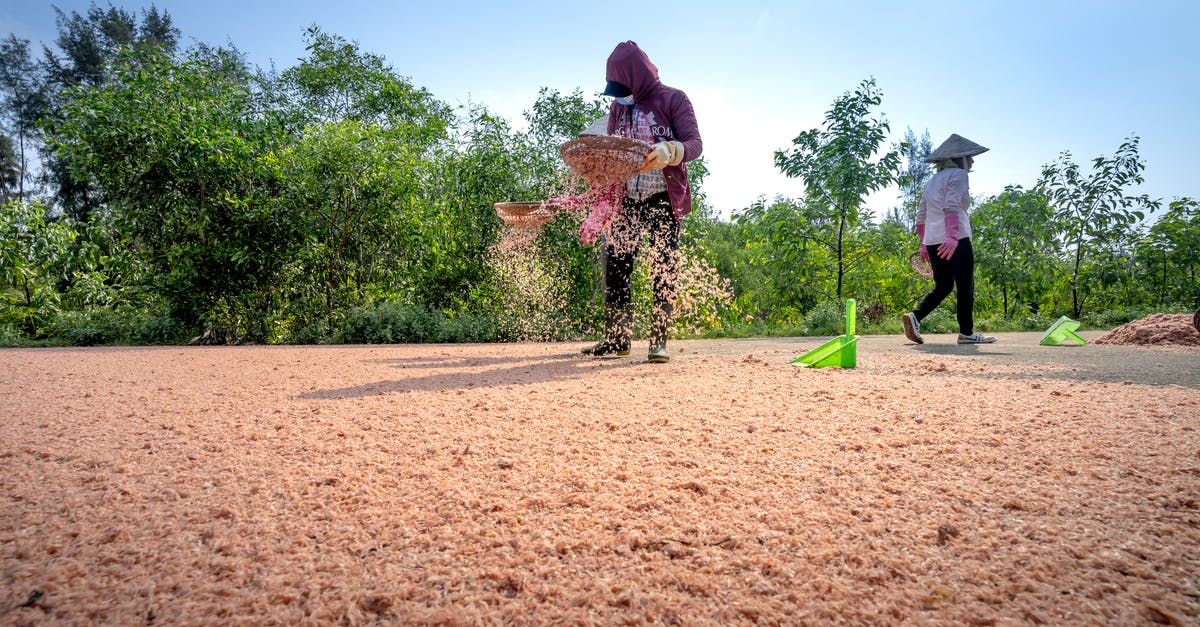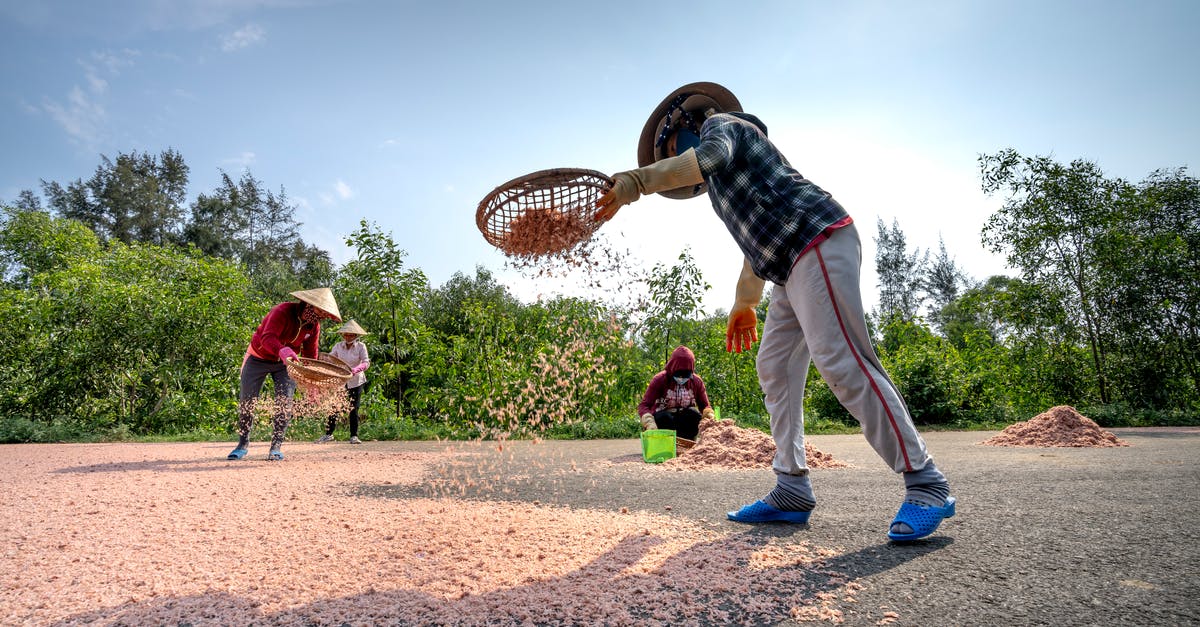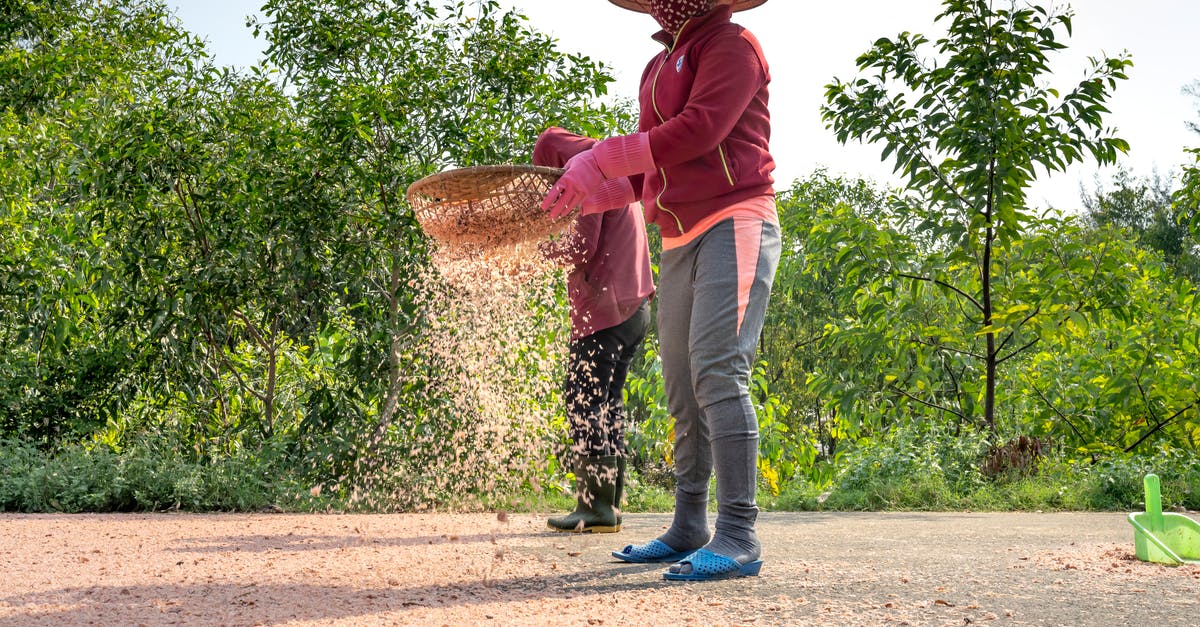How to prevent separation/layers in panna cotta?

I recently discovered how easy it is to make panna cotta via a recipe by Mark Bittman. The only problem I found was that my panna cotta started to visibly separate into two distinct layers after a couple hours in the fridge. Google searches brought up others that complained of different types of separation, but mine was, unlike most, very much gelled layers with one creamier than the other on top. I enjoyed the distinction between the two while eating, but I would like something more evenly distributed in the future.
I followed Bittman's directions to the letter, with the same proportions and quantity of everything but the lime that I substituted for dried lavender to taste. Half an hour or so of cooling time before pouring brought it down to room temp, which was ~65F. I strained, poured, and chilled for 5 hours before serving.
Is there anything I can change in the future, including the proportion or mixing of half-and-half and cream (which I suspect is the cause of separation), that would prevent this from happening? I would not mind leaning towards an all half-and-half solution to this, as the richness of all cream feels kind of cloying to me.
Best Answer
It sounds to me like you didn't get the gelatin dispersed properly.
Since the recipe you linked to doesn't explicitly mention it, and neither does your question, I'm going to assume that you didn't bloom the gelatin first. You must do this if you want proper dispersion of any gelatin product.
To bloom powdered gelatin, just sprinkle it over cold liquid and leave it (cold) until it's visibly swelled. This usually takes about 5 minutes. Then simply heat and stir (thoroughly) to disperse.
To bloom sheet gelatin, you do almost the same thing - soak them for a little longer (up to 10 minutes) in cold water a separate vessel, then squeeze them to wring out any excess water, and then add to your cooking liquid (in this case cream).
You might also consider use a stick blender/immersion blender to make sure that it is completely dispersed after melting. This is usually unnecessary for gelatin, but if you're blooming it and still can't get uniform distribution, that will help.
I'm certain that if you follow the proper preparation, your panna cotta will turn out fine next time.
P.S. Do be careful not to add too much lime or other acid; gelatin will not set properly at pH levels around or below 4.
Pictures about "How to prevent separation/layers in panna cotta?"



Quick Answer about "How to prevent separation/layers in panna cotta?"
I believe the different layers are milk as one layer and cream as the other. I have overcome the problem by waiting for the mixture to start setting, then giving it a good stir, BEFORE pouring it into already chilled moulds. This then enables it to fully set before the mixture has time to separate.Why does my panna cotta have two layers?
Perhaps the gelatin didn't melt all the way, or you accidentally boiled the mixture. (Boiling destroys gelatin's thickening power.) It may also have not set long enough. My panna cotta has two layers!What can go wrong with panna cotta?
Panna cotta making challenges You heat up your cream and sugar, to ensure that all the sugar molecules dissolve. Next, you add gelatin and you let it set. Despite the simplicity, making a panna cotta can go wrong quite easily, especially if you start adding other ingredients, or chaging things up a bit!How firm should panna cotta be?
The hardest part about making panna cotta is achieving the proper consistency and texture\u2014it should be silky smooth and just firm, with a gentle wobble.\u201d The right recipe and ratio should give you that texture and wobble 100% of the time; there's very little technique involved in getting panna cotta right.How do you save panna cotta?
You can keep it softly set and serve it in a sparkling glass, or let it gel a little more firmly and pot it in a Dixie cup to unmold as a plated dessert. What's more, panna cotta has an extraordinary shelf life\u2014it can keep 10 days or longer in the fridge, if tightly wrapped and protected from savory odors.Panna Cotta
More answers regarding how to prevent separation/layers in panna cotta?
Answer 2
I know more than a year has passed, but I'm usually late to the party.
This is not a problem with gelatin dispersion; it's simply that the cream separated from the milk and rose to the top. It happened to me once when I made panna cotta, too.
I have not come up with a solution to this, but I did learn something today that I hadn't known before (from America's Test Kitchen, so I tend to trust it): While milk and half-and-half are homogenized, apparently whipping cream and heavy cream are not. This explains the separation.
I'd be thrilled if someone knows a way to keep the cream from separating.
Answer 3
I believe the different layers are milk as one layer and cream as the other. I have overcome the problem by waiting for the mixture to start setting, then giving it a good stir, BEFORE pouring it into already chilled moulds. This then enables it to fully set before the mixture has time to separate. I chill the moulds in the freezer so that they are really cold.
Answer 4
I believe this to be a cream , milk issue. The cream is visibly thicker and fatter than the milk when you look at at separate layers. I Know I lot about milk , I milk cows for a living , all I have done to stop this , is once The Panna-cotta has sat in the fringe for 30 min BEFORE it starts to harden up , I skim off the skin floating on top and re stir the panna cotta mixture. this does help.
Answer 5
It's odd that no one has thought that acidity might cause the problem. Lemon panna cotta is a common recipe. You could in effect be making very bad gelled cheese floating on the separated gelled whey.
Answer 6
Hey also I find the method of cooling is has a huge affect
It is good to wait till the mixture is at room temperature before adding to the glass /jar / mould
And then put to the fridge
Put piping hot mixture in to the fridge will affect the setting of the pannacotta
Answer 7
It's the gelatin. If it were the cream, the top layer would be fatty. As in the first answer, you need to 'bloom' the gelatin properly
Answer 8
I don't think it is the gelatine. I strongly suspect that it is the mixture of milk and cream. I am going to make a test version using only milk to test my theory.
Answer 9
I've had this happen to me the last 2 or 3 times ( I make some every week ) I've come to the conclusion that it is the cream floating like you used to get with milk bottles before homogenisation came in as main stream. I'm gonna try and cool the mix a little and stirring before potting
Sources: Stack Exchange - This article follows the attribution requirements of Stack Exchange and is licensed under CC BY-SA 3.0.
Images: Quang Nguyen Vinh, Quang Nguyen Vinh, Quang Nguyen Vinh, Quang Nguyen Vinh
